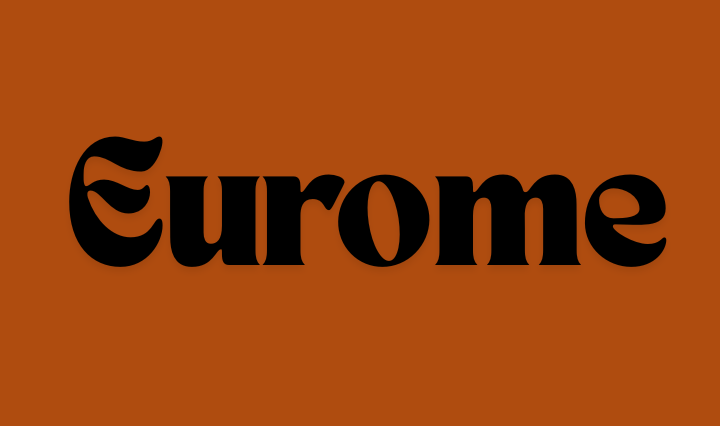Contents
Introduction to Eurome
Welcome to the intriguing world of Eurome, Europe’s boldest financial enigma. This unique currency has captured the imagination of economists and everyday citizens alike. With its origins shrouded in mystery and a future that sparks debate, Eurome stands as a symbol of innovation and risk within the European economy.
Why is it gaining traction? What makes it so controversial? As we dive into this captivating journey through history, controversies, advantages, disadvantages, economic impact, and predictions for the future of Eurome, let’s unravel what truly sets this currency apart from traditional monetary systems. Buckle up—it’s going to be an enlightening ride!
History and Evolution of the Currency
The journey of Eurome began in the early 2000s. A group of visionary economists sought to create a unified currency for Europe, aiming to simplify trade and enhance economic stability across nations.
Initially rooted in digital technology, Eurome was designed as a response to challenges faced by traditional currencies. It leveraged blockchain for secure transactions, gaining traction quickly among tech-savvy users.
Over the years, governments scrambled to adapt their financial systems. Legislative frameworks evolved alongside Eurome’s growing popularity. Financial institutions began integrating it into their operations.
As adoption increased, so did scrutiny from skeptics worried about its impact on national sovereignty and inflation control. Yet this bold initiative continued to evolve amidst these controversies.
Today, Eurome stands not only as a currency but also as a symbol of Europe’s ambition towards innovation and collaboration in finance.
The Controversies Surrounding Eurome
Eurome has sparked heated debates since its inception. Critics argue that it undermines national currencies, leading to economic instability in member states. This fear of losing monetary sovereignty raises eyebrows among economists and citizens alike.
The governance structure also faces scrutiny. Skeptics question the transparency of decision-making processes within the Eurome framework. Many feel excluded from discussions that directly impact their financial futures.
Another point of contention is inflation control. Some nations worry about potential disparities, fearing that a single policy will not address unique regional challenges effectively.
Moreover, tech-savvy individuals voice concerns about cybersecurity risks linked to digital transactions using Eurome. As our world becomes increasingly interconnected, these fears resonate deeply with those wary of new technologies influencing finance.
Public sentiment is mixed; while many embrace innovation and convenience, others cling tightly to traditional values tied to their own currencies. The future remains uncertain as these controversies continue to unfold.
Advantages and Disadvantages of Using Eurome
Eurome presents a fresh alternative for financial transactions across Europe. One major advantage is its low transaction fees, making it appealing for both consumers and businesses. This feature encourages more people to embrace digital finance.
Another benefit lies in the transparency Eurome offers. Users can track their expenses effortlessly, promoting better budgeting habits.
However, there are drawbacks. The lack of widespread acceptance could pose challenges when trying to use Eurome in everyday purchases. Many merchants remain hesitant to adopt this currency due to uncertainty surrounding its future.
Security concerns also linger among potential users. While designed with advanced technology, any new financial system faces scrutiny regarding data protection and fraud risks.
Despite these pros and cons, Eurome continues to generate interest within European markets as individuals seek innovative ways to manage their finances efficiently.
The Impact of Eurome on European Economy
Eurome has emerged as a disruptive force within the European financial landscape. Its introduction challenged traditional banking systems and payment methods, prompting innovation across the continent.
Businesses have begun to adapt quickly. Many merchants now accept Eurome alongside established currencies, attracting a younger demographic eager for modern solutions. This shift encourages competition and often leads to lower transaction costs.
Moreover, Eurome’s decentralized nature fosters economic inclusivity. Small enterprises find it easier to enter the market without barriers presented by conventional banks.
However, this new currency also poses risks. Regulatory bodies are grappling with how to integrate Eurome into existing frameworks while ensuring consumer protection. The dynamic of supply and demand may lead to volatility that could affect long-term investments in Europe’s economy.
As adoption grows, its influence will likely continue reshaping markets in unpredictable ways.
Predictions for the Future of Eurome
The future of Eurome is shrouded in excitement and uncertainty. Analysts predict that as digital currencies gain traction, Eurome may evolve into a fully integrated digital form. This transition could redefine transactions across borders.
Adoption rates are also expected to rise, particularly among younger demographics who value innovation and convenience. Their willingness to explore new financial avenues could drive demand for Eurome.
However, challenges remain. Regulatory frameworks are still being developed and may impact its growth trajectory significantly. Stability will be key; without it, confidence in the currency might waver.
Partnerships with tech companies could enhance usability and security features. If executed well, these collaborations can bolster trustworthiness among users globally while positioning Eurome as a formidable player on the European stage. The coming years will reveal whether this bold financial enigma can truly realize its potential in an ever-changing economic landscape.
Conclusion
Eurome has emerged as a fascinating financial enigma in Europe. Its history is a tapestry woven with ambition, innovation, and controversy. As the currency continues to evolve, discussions surrounding its impact on European economies flourish.
The debates around Eurome are complex. Advocates highlight its potential for greater economic integration within the EU, while critics point to inherent risks associated with such bold moves. Users grapple with both advantages and disadvantages that this currency offers in their daily transactions.
Looking ahead, predictions for Eurome’s future vary widely among experts and analysts alike. Some envision it becoming a cornerstone of Europe’s economy; others caution against potential pitfalls that may arise from its widespread adoption.
As we navigate through these fascinating developments, one thing remains clear: Eurome represents more than just another currency; it symbolizes the ongoing quest for unity and progress across Europe’s diverse landscape.

